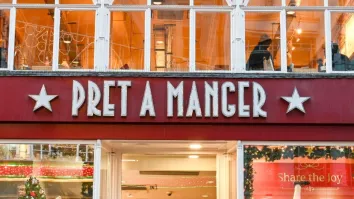
Latest Research on Out of Home Market Makes for Difficult Reading
The NPD Group says this pattern of decline was last seen at the start of Britain’s 2007/2008 recession.
Total visits in the eat-out or out-of-home (OOH) foodservice market dropped 1% in Q1 2018 versus the same quarter a year earlier, according to global information company The NPD Group.
The mentioned 1% decrease is equivalent to 28 million visits, or 112 million on an annualized basis.
In the same period, breakfast was down in visit terms by 1.6% against the same quarter a year earlier and has now registered its second quarter of declining visits following more than seven quarters of growth. Lunch, meanwhile, saw a 5.1% drop in visits against the equivalent quarter in 2017. This marks the third quarter of decline for this daypart in the past year after six quarters of growth. Lunch frequency also decreased by -4.8% year-on-year (from 83.1 to 79.1).
Dinner visits within the OOH foodservice market have reportedly been in decline for a long period. For YE December 2017, OOH dinner visits were down 2.3% compared to the same period two years earlier (YE December 2015). Dinner frequency is also down with consumers averaging 61.2 dinners in the past 12 months (YE March 2018), down -3.5% against the previous year.
The NPD Group claims this pattern of decreasing foodservice visits was last seen at the start of Britain’s 2007/2008 recession, where consumers "very quickly" changed their consumption behaviour that resulted in a dramatic decline of 510 million OOH visits annually by 2010.
The company says the last recession was "an opportunity for the industry to reshape its offering to consumers in terms of quality, choice and the overall customer experience" but surmises that the British foodservice market has not fully recovered from it as the industry remains to have 370 million visits smaller each year than 2008.
"Although it is too soon to say whether we are currently in recession or not, there are clear warning signs. This time around, any sustained downturn would be more difficult to overcome because the foodservice industry is seeing fresh threats on top of existing operating and cost challenges. The casual dining sector, for example, is facing pressure from quick-service brands that are offering new food choices and newly refurbished modern outlets. Consumers also have a bigger choice than ever of operators offering healthier and lighter eating. It is likely that any new recession in foodservice will be harder to fight because the landscape is already intensely competitive," Cyril Lavenant, Head of Foodservice UK in the NPD Group, said.
The NPD Group now tells foodservice operators in the UK to respond to the changing business environment by gaining the "best possible" understanding of core customers, engaging loyal customers through promotions or events "that make them feel ‘special’", and by encouraging new customers to make return visits.
They also emphasised the need to offer value for money, the highest quality food and beverages, and a strong customer experience.
“Eat-out visits began to slow down after the Brexit referendum in June 2016 and the consequences of this became clear from the second half of 2017 onwards, when the market started to lose visits after four years of growth. This trend has accelerated since the start of 2018 and now is the right time to sound a warning. The foodservice industry has so far demonstrated remarkable resilience in the face of tougher operating conditions, cost pressures and the uncertainty caused by Brexit. But since the end of last year we have seen some evidence of decline and operators will need to monitor carefully whether this downward trend continues. If it does, they will have to act fast to protect their business," Lavenant added.
























